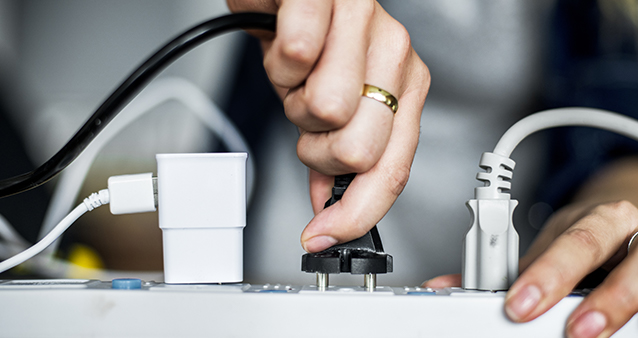Fight the Power

What's worse than load shedding? Well, several things – and having your freezer fried by a post-load-shedding power surge is right up there. Does your insurance cover you for damage to your precious electronics in the event of a current calamity?
All insurance is not created equal, which is why you should be clear about the terms of your policy – particularly in the face of load shedding and the way surges from returning power can toast your toaster or singe your satellite decoder.
Don't let the fine print show you flames
Some insurance policies will cover you for damage to appliances as a result of power surges outright. Some others carry the condition that you have to prove you have a working surge protector in place first. Others will require you to take out additional cover to ensure your expensive electronics can be replaced if they're taken out by a surge.
It's difficult to say whether you're covered for power surge-related damage simply by virtue of being insured. It'll depend on your individual policy and circumstances, so, as with any policy, be sure to read the fine print so you know exactly what you're covered for, or contact your insurer to find out.
Most insurers offer power surge cover up to a certain limit under the household section, which may not be adequate if you have expensive electronic items. In addition, also check what cover is provided for the loss of the contents of your fridge or freezer in the event that your appliances break down, or the power simply stays out.
Prevention is better than... boom?
What's the best way to avoid frying your laptop when the power comes back on? 'Take the plug out of the socket!' is the advice from Paresh Moti, R&D Manager at Clearline Protection Systems, who produce surge arrestors to protect home appliances and industrial machinery.
'That's the safest way. But if you're not going to be around, the best way to protect your home electronics from power surges is to install surge protection at the DB board, with supplementary protection at the plug points,' he says.
Like a plane which has a protective shell that diverts direct lightning strikes, you need to protect your household at all entry points, so it's best to cover your DB boards, TVs, fridge and other appliances individually. Surge arresters are divided into three classes, with Class 1 offering the most protection. Many home appliances have limited built-in surge protection, but it isn't necessarily enough to protect from major or repeated spikes.
Prod your Protector
Moti says that basic surge protectors, which plug into plug points and then have appliances plugged into them, can help save electronic equipment from power surges, but it's important to check them regularly.
'Most surge protectors will save your appliances, but once they've protected them from a major surge, they degrade and no longer offer protection,' he says. 'The ones which are pricier – but more effective – contain thermal fusing, which means that if the plug has taken a strike or a surge, it will stop functioning. This is a requirement and an SABS standard often overlooked when buying on price.'
Moti says that most arresters have LED lights on them to show when they're still functioning, but people plug them in behind a cabinet and forget about them – and are then 'shocked' when a surge takes out their appliances because they thought they were safe, after they've already been saved.
Low lows are as bad as high highs
It's not just load shedding, but also cable theft that causes surges. 'When the power comes back on after a cable has been reinstalled, the current may not be the standard 230 volts, but something approaching 380 volts, which appliances can't cope with, and they start popping,' says Moti. He recommends a product that monitors the incoming voltage and only allows current through when the input has stabilised for at least 10 seconds.
'Voltage sag' is another thing to watch out for, as the power coming back can suffer troughs as well as surges. 'You should ideally have protection for undervoltage power as well, where if the current coming in is under 180 volts, it could also cause some electrical elements to malfunction or fail – so you need that time delay for things to stabilise,' says Moti.
Compare, cover and understand
Want to make sure you're covered for life, love, load shedding and everything else?
Compare household insurance with Hippo.co.za's handy home insurance comparison tool to make sure you'll be able to get online again quickly if Eskom zaps your laptop.
This article is for informational purposes only and should not be construed as financial, legal or medical advice.
Hippo Blog Categories

































